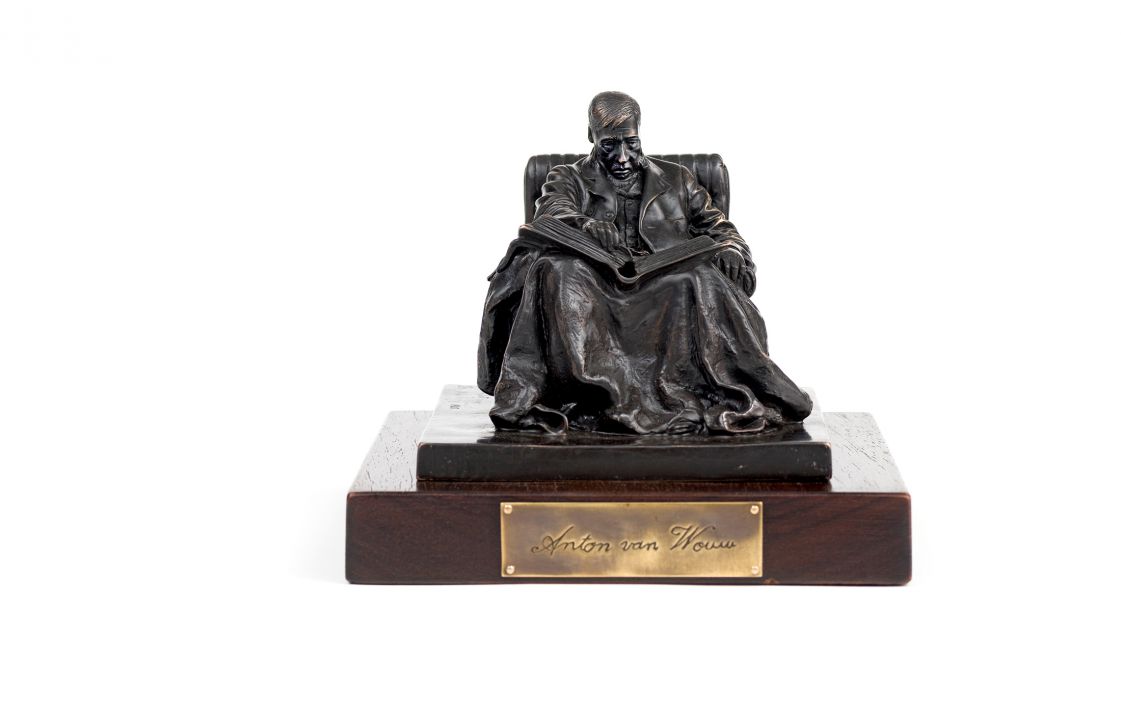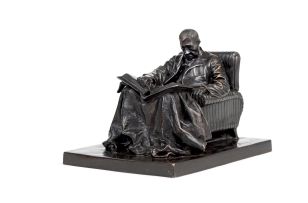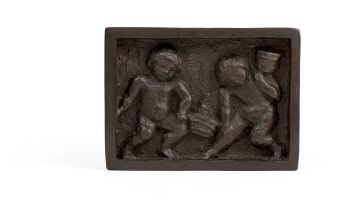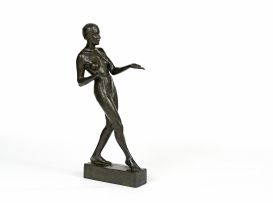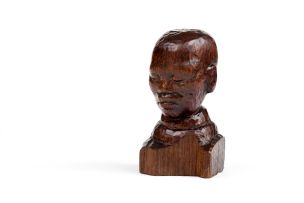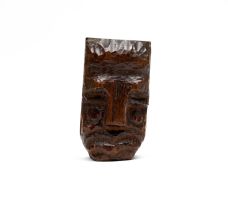Important South African and International Art
Live Auction, 13 November 2017
Session Three
Incl. Buyer's Premium & VAT
About this Item
signed, dated 1907 and inscribed 'Fonderia G Nisini Roma'
Notes
Paul Kruger - idealist, frontiersman, hunter, guerrilla fighter, diplomat and tragic folk hero - remains instantly recognisable as the obstinate, devout and slack-cheeked face of Boer independence. With his capital and major towns under British control, and Lord Roberts announcing the annexation of the South African Republic, Kruger went into exile in September 1900. While his loyal commandos - die bittereinders - turned to guerrilla tactics, their leader, dogged to the last, sailed from Lourenço Marques to Marseille to raise support for the Boer cause. Despite initially being well-received in Paris, Cologne and The Hague, Kruger's health and influence dwindled. At Oranjelust, his base in Utrecht, he lowered the flags of the South African Republic and the Orange Free State after the Treaty of Vereeniging formally ended the war in May 1902. Refusing to return to his country as a British subject, however, and feeling he might better serve his people by remaining in exile, he lived out his final days in Clarens in western Switzerland, views of his beloved veld replaced by the Alps. He died in July 1904, having penned his final letter to his people of the Transvaal, asking that each 'seek all that is to be found good and fair in the past'.
Three years later Anton van Wouw, working between Pretoria and Johannesburg, imagined the lonely ex-President sitting deep in his armchair, his knees blanketed, and with his Bible, his only comfort, resting open on his lap. The artist kept the old man's gaze from the pages; Kruger stared above them, either in resignation or resistance. The two versions that Van Wouw made of this work differ only in size, essentially; the current lot is the smaller example, another casting of which was exhibited at the artist's retrospective in 1909 at the Fine Arts Society in London, shortly before the Union of South Africa was formed in 1910.
Literature
AE Duffey (2008). Anton van Wouw: The Smaller Works, Pretoria: Protea Book House. Another cast from the edition is illustrated on pages 50 and 51.
